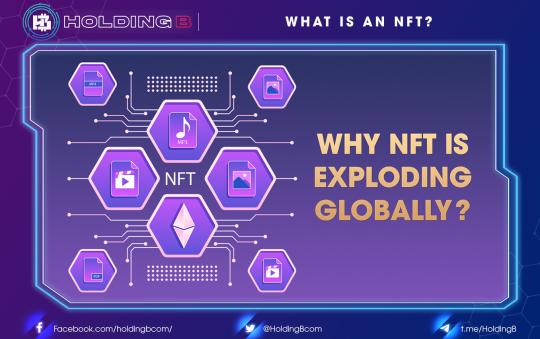As you may be aware, Uniswap has always been one of the best DeFi protocols for Ethereum token trading. SushiSwap is a fork of Uniswap with the SUSHI token added. It also gives users control over the protocol and compensates them for a portion of the fees.
We’ll look at what SushiSwap is, how it works, and what the SUSHI token is for in this article.
What exactly is Sushiswap?
SushiSwap is a decentralized exchange (DEX) with a smart contract for automated market-making (AMM).
This exchange, like Uniswap, is built on the Ethereum blockchain and allows users to trade a variety of tokens as well as provide other types of currency support.
It does not rely on centralized authority to complete transactions, instead relying on smart contracts and liquidity provided by different users.
How did SushiSwap start?
SushiSwap began as a fork of Uniswap, and in August 2020, a developer known as Chef Nomi forked the Uniswap code to create SushiSwap, a rival clone.
SushiSwap began the project by luring customers and liquidity away from Uniswap by providing enhanced incentives to liquidity providers (LPs), a technique known as a “hacker attack.” It is, however, a successful strategy, with some Uniswap teams moving over 90% of their liquidity to SushiSwap.
How does it work?
SushiSwap, like Uniswap, uses automated market makers (AMMs) to complete transactions using smart contracts. Tokens are offered by liquidity providers through liquidity pools. These tokens are stored in pools as token pairs, ensuring that the assets required to complete the transaction are available. In a process known as Yield Farming, liquidity providers are compensated with a portion of trading fees.
SushiSwap also provides other DeFi features, such as the ability to stake SUSHI tokens in the network and receive rewards, in addition to token exchange. Users can also use its Miso service to participate in lending services and purchase new tokens offered by DeFi startups.
BentoBox
BentoBox is a vault (store) that will store all of the tokens and assist in the creation of Yield on those tokens. BentoBox offers a variety of services, such as lending, synthetic token minting, leveraged trading strategies, and the best yield optimization strategy, among others….
Kashi Lending
Kashi uses Bento Box as a wallet to borrow and lend tokens in the pool
Miso
Miso is a set of open source smart contracts developed to support the launch of projects on the SushiSwap exchange.
Investors can buy and hold tokens of potential projects through IDO. That token can increase in price many times after the first sale, bringing huge profits to investors.
Mirin
Mirin is a special feature that helps connect liquidity from CEXs to SushiSwap, this feature will be released in SushiSwap V3.
Analysis of the operation model SushiSwap (SUSHI)
xSUSHI
xSUSHI is a token similar to that of liquidity provider SushiSwap and you get xSUSHI in exchange for SUSHI tokens staking in Sushibar.
Benefits:
- APY 5%: Taking SUSHI gives you 5% APY.
- Governance: the new xSUSHI token has the ability to participate in governance, the SUSHI token does not.
- Revenue: If you hold xSUSHI tokens, you will receive a portion of the revenue from all SushiSwap products.
- You have to lock SUSHI for 6 months, this helps stabilize the SushiSwap project.
Sushiswap – Multichain AMM
The operating model of SushiSwap is quite similar to Uniswap, but there are still some differences between these two AMMs.
A comparison between two AMM Uniswap and SushiSwap
UniSwap vs SushiSwap: What’s the Similarity?
- Automated Market Maker Model (AMM)
- Use the algorithm x*y=k
- Pool 2 token model with 50%: 50% ratio
- Transaction fee 0.3%
Differences:
For Uniswap
Liquidity Provider (LP) will enjoy all 0.3% transaction fee.
There is no Liquidity Mining program.
For Sushiswap
0.3% transaction fee will be split, 0.25% for LP token, 0.05% will be for xSUSHI holder.
There is a Liquidity Mining program, which incentivizes users to provide liquidity by rewarding additional SUSHI tokens.
Similarities between Uniswap and Sushiswap in operation
AMM (Automated Market Maker)
Instead of using the traditional order book model to facilitate trading, these exchanges use the AMM model to facilitate trading. As a result, users do not have to wait for another party to execute transactions or exchange their crypto assets, and the price received for an asset you want to buy or sell is determined by a formula.
Liquidity group
Both decentralized exchanges have liquidity pools with tokens of two separate cryptocurrencies. Users have the flexibility to swap one token for another in the liquidity pool for a specific fee.
On the other hand, liquidity providers (LPs) can add funds to the liquidity pool. In return for providing liquidity to the protocol, LPs earn fees from the transactions that occur in their pool.
The differences between Uniswap and Sushiswap in operation
Liquidity mining
Uniswap: It only creates an opportunity to profit from the pool’s transaction fees, and when they withdraw their capital, they will no longer receive a passive income source. LPs that join early will experience a reduction in earnings due to the participation of other strong LPs.
Sushiswap: It provides passive income from accumulating even though that LP has withdrawn from the pool.
Loan and escrow trade
As Uniswap maintains service as a decentralized exchange, it introduces DeFi related features.
On Sushiswap, you can explore a feature called “BentoBox,” which acts as a token store. Currently, you can find a dApp called Kashi in BentoBox. The Kashi App uses tokens in BentoBox for lending and borrowing as well as margin trading.
Swap fees
Uniswap fees include three different fees. Fees include 0.05%, 0.3%, and 1% rates, based on the risk that liquidity providers take on expected volatility within pools.
SushiSwap charges a general swap fee of 0.3% on all trading pairs. Liquidity providers receive a 0.25% swap fee.
Centralized liquidity
Uniswap envisioned the concept of centralized liquidity.
SushiSwap doesn’t have any centralized liquidity-related features.
Rewards for new tokens
I couldn’t find any additional rewards for launching new tokens on Uniswap.
SushiSwap includes an “Onsen Program” feature and an incentive program. It rewards SUSHI tokens for a certain number of pools, promoting liquidity provision for pools on SushiSwap.
See ya in the next article !
Don’t forget to follow useful articles about Crypto Market from team Holding B !!!
- Telegram Channel: https://t.me/HoldingBcom
- Telegram Group: https://t.me/HoldingB
- Website: https://holdingb.com/
- Twitter: https://twitter.com/HoldingBcom
- Facebook: https://www.facebook.com/holdingbcom





